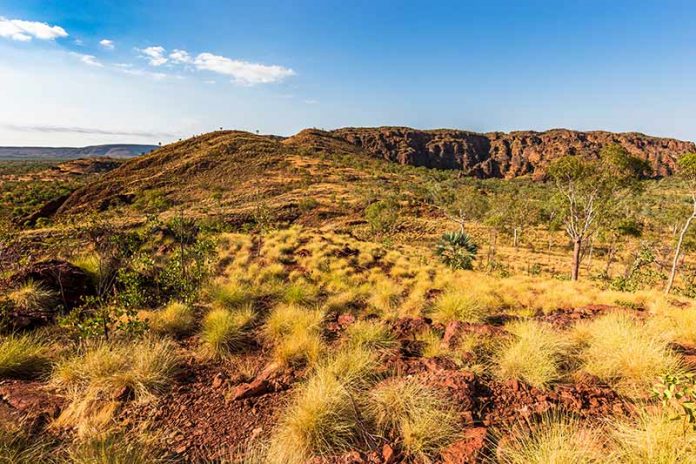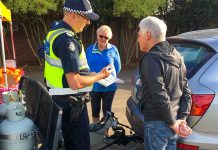Keep River National Park is one of the NT’s best-kept secrets, with its striking sandstone formations – like those found at Purnululu – diverse landscapes and indigenous rock art.
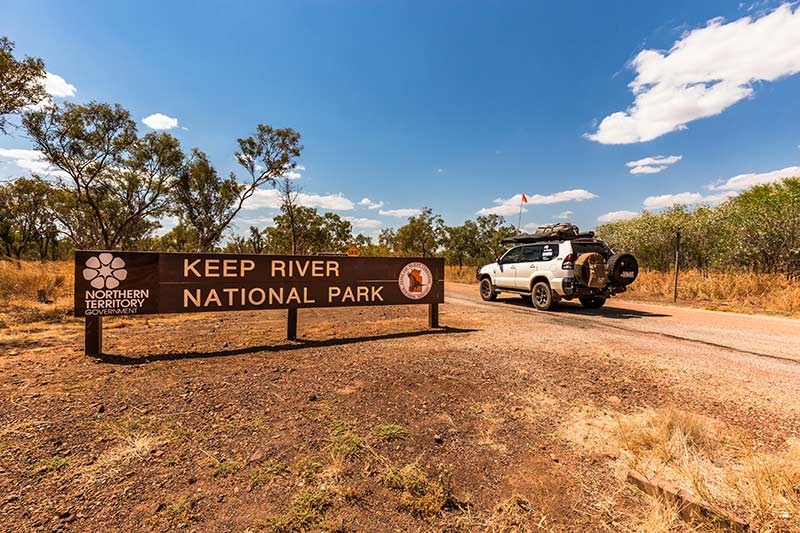
Being so close to Kununurra and Lake Argyle, a day trip can easily be entertained. The two campgrounds, however, provide the perfect base to fully enjoy the magnificent walks on offer.
ARRIVING AT KEEP RIVER
Having departed the Lake Argyle Resort after a morning ‘Beyond Argyle’ tour with Lake Argyle Adventures, the temperature was on the rise. It was very late in the season – hot, dry and dusty, but suffering a little bit of pain brought a multitude of rewards.
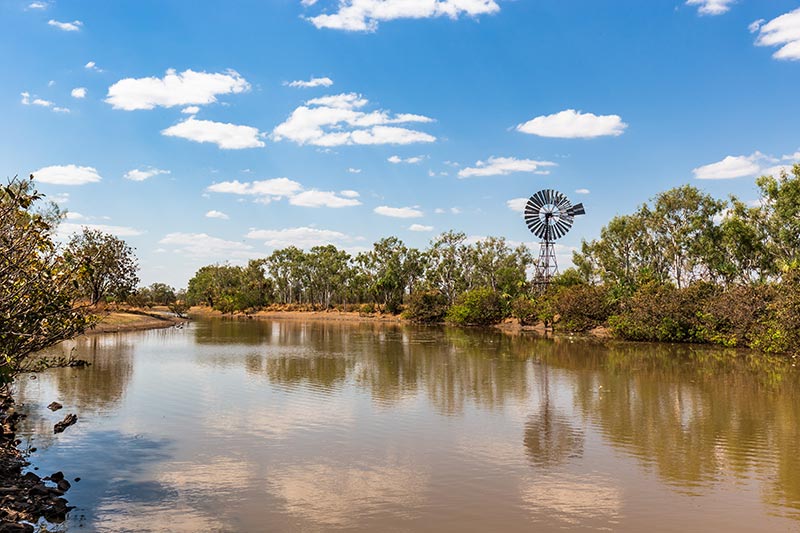
Crossing the border into the NT and adjusting the watch, a little time was lost in an instant. Within three kilometres, the turn-off had been reached and the gravel road led me into an ancient landscape.
The first stop was the ranger station at Cockatoo Lagoon and as inviting as the water looked, this was croc country, so swimming was not permitted. The information boards inside the ranger station provided insight on how to get the most out of the Keep River National Park. There are picnic facilities near the lagoon, which is also a great spot for birdwatching.
KEEP RIVER CAMPING
The Keep River Access Road is suitable for 2WD vehicles and all the walking trails can be reached easily.
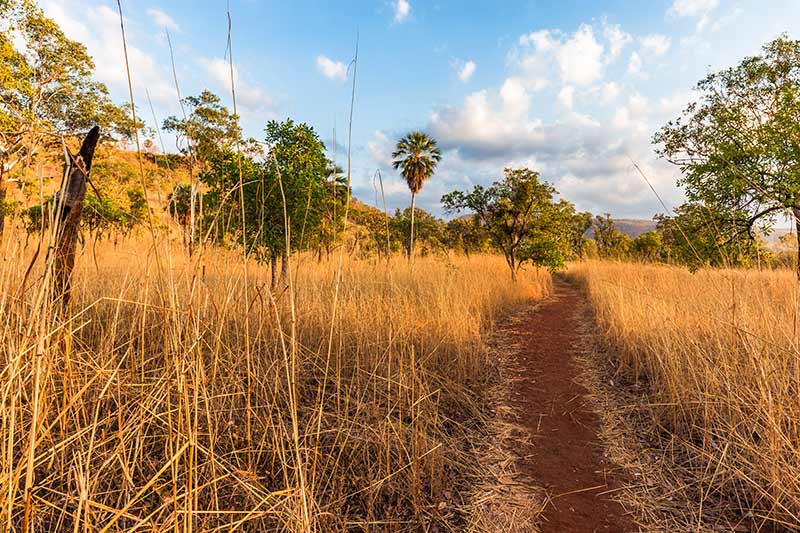
While corrugations are the norm, caravans are permitted at Jarnem and Goorrandalng campgrounds. During the wet season and after rain, roads may be closed due to flooding.
Unfortunately, due to the September hot weather (the best times to visit are between May and August), the Jenemoom walk was closed. It was a shame as the stunning 3km walk follows the bed of the Keep River to a wet-season shelter used by the Miriwoong people. Ancient art and a shell midden are evidence of their occupation.
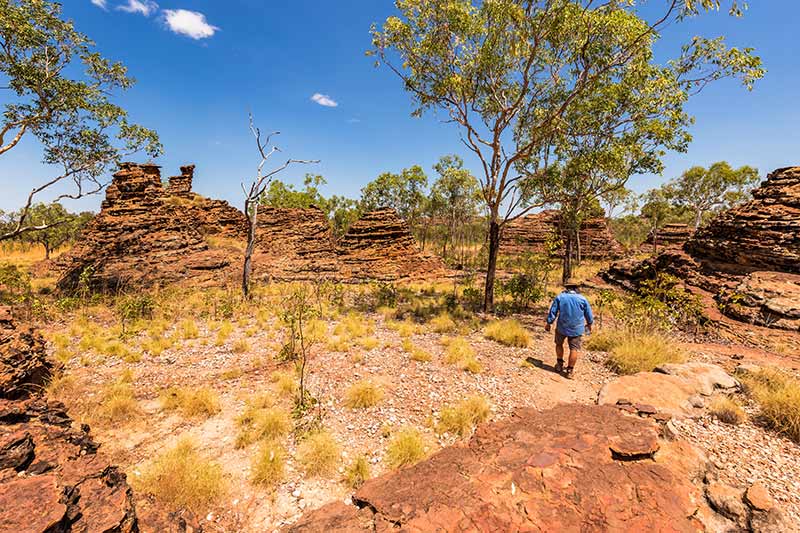
I decided to drive the 30km to Jarnem and camp the night there, hopeful of a colourful sunset before tackling the loop walk early the following morning. Not far from the ranger station turn-off was one of the two drinking water points within the park, with the second at Jarnem.
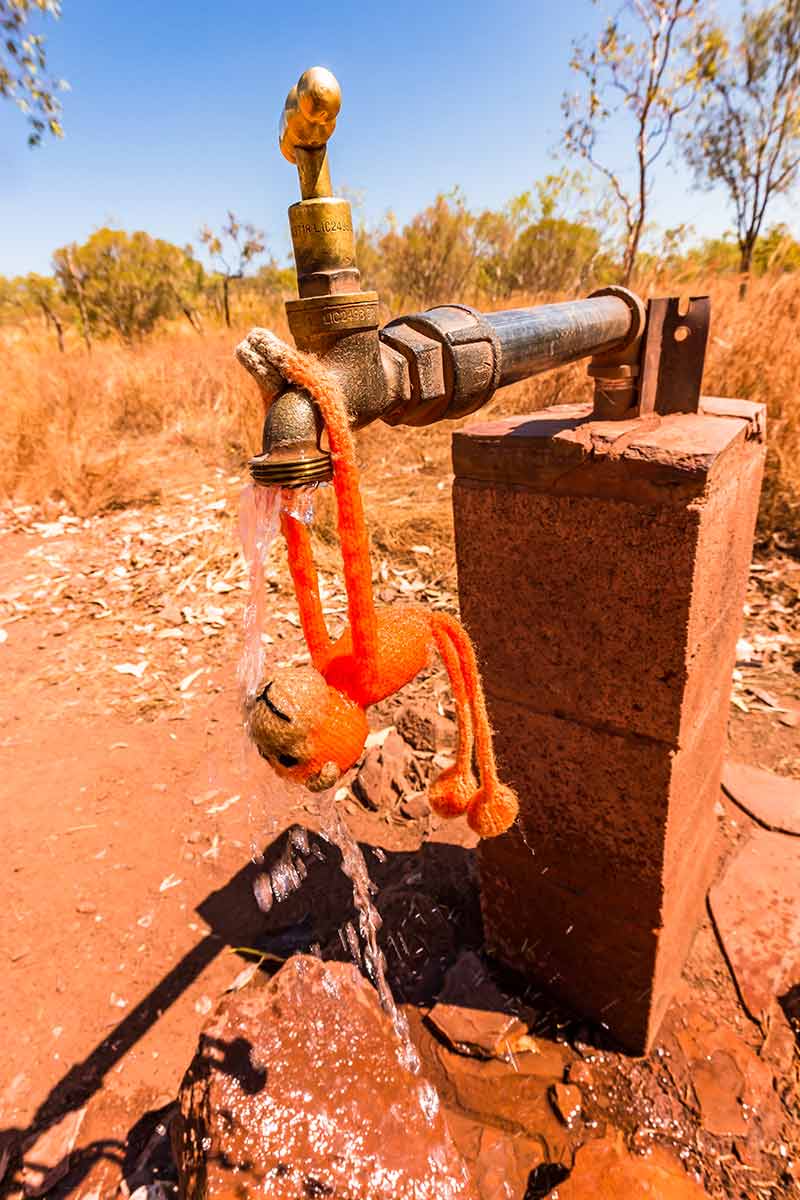
Upon reaching the campground, I was surprised to see a few others there already. Still, there were plenty of sites for everyone with enough distance between them to not feel crowded. It costed $3.30 per adult, $1.65 per child and $7.70 per family per night to camp within the park, paid in cash at self-registration stations.
JARNEM LOOP WALK
Rising early the next morning, a group of us set out on the 7km Jarnem Loop Walk as the sun rose above the horizon. The temperature rose quickly, so extra water was being carried, adding weight to the backpack. Leaving the campground, the trail lead me through the grasslands before reaching a Y-intersection.
Taking the left-hand trail across the black soil floodplain, you’ll soon reach Nigli Gap. There is some Indigenous art along the base of the escarpment. The sandstone formations that dominate the landscape are 300 million years old and are from the same ancient seabed as the Bungle Bungles.
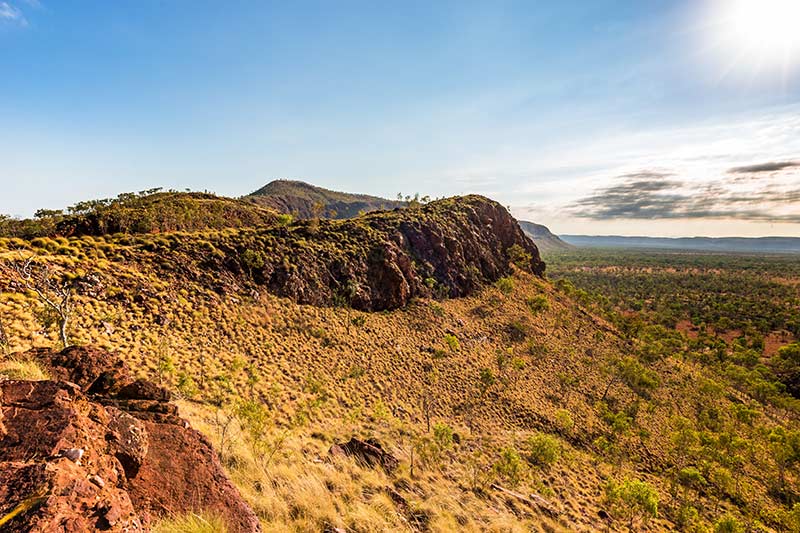
The trail continued towards the Jarnem Lookout, with a moderate climb to spectacular views across the Keep River floodplain and the Jarnem escarpment. The Miriwoong people call this hill Wyimny and from here they can see the Dreamtime stories written in the landscape.
From here a steep descent leads back down onto the floodplain through a eucalypt woodland and returns you to the campground.
GOORRANDALNG CAMPGROUND
The campground at Goorrandalng is more open and set amongst bloodwoods, woollobuts and ironwoods. From here, the 2km loop walk along the Gurrandalng (Brolga Dreaming) Walk will take you through some amazing rock formations and views across the dramatic landscape. For thousands of years, Aboriginal people visited this land for shelter, hunting and to tell stories with their rock art.
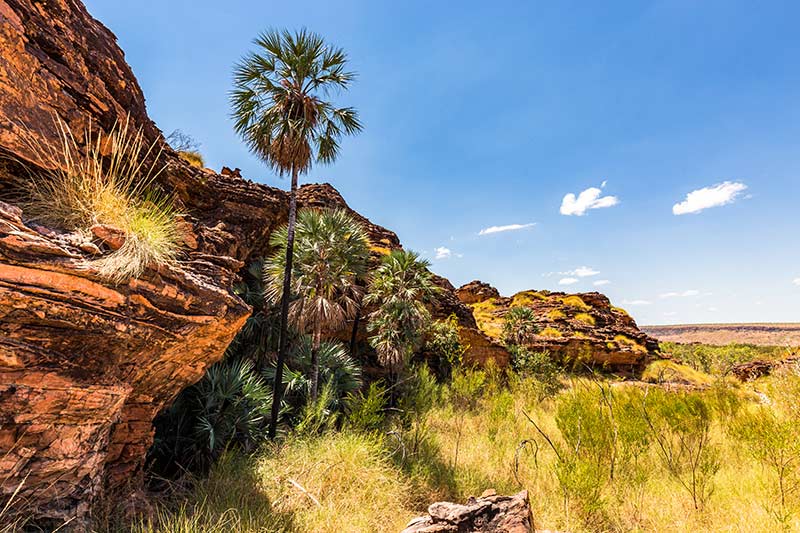
The trail has interpretive signs dispersed along the marked track that is recommended to be completed in an anti-clockwise direction. The brilliant sandstone ‘honeycomb’ domes, eroded over time by the winds and rains, dominate this walk, as do the tall livistona palms clustered at the base of the domes or clinging precariously in the high cracks and crevices.
As you’re walking through what looks like a lost city, keep an eye out for the elusive short-eared rock-wallaby while listening for the melodious call of the sandstone shrike-thrush. The track winds through the spinifex, its sharp spines ready to prick you if you walk off course.
The Brolga Dreaming story tells of two Aboriginal people who travelled from the sea to this area of the Keep River National Park. As they walked, they collected grass and bushes to make a large nest, before jumping around and making noises like a brolga. As the country listened, the two Aboriginal people changed into brolgas and this place was named Gurrandalm, the place of Gurrandalng.
GINGERS HILL
Another interesting spot to explore is Gingers Hill, where you will find a strange stone structure with a roof made of sticks and leaves sitting at the end of the 200m track.
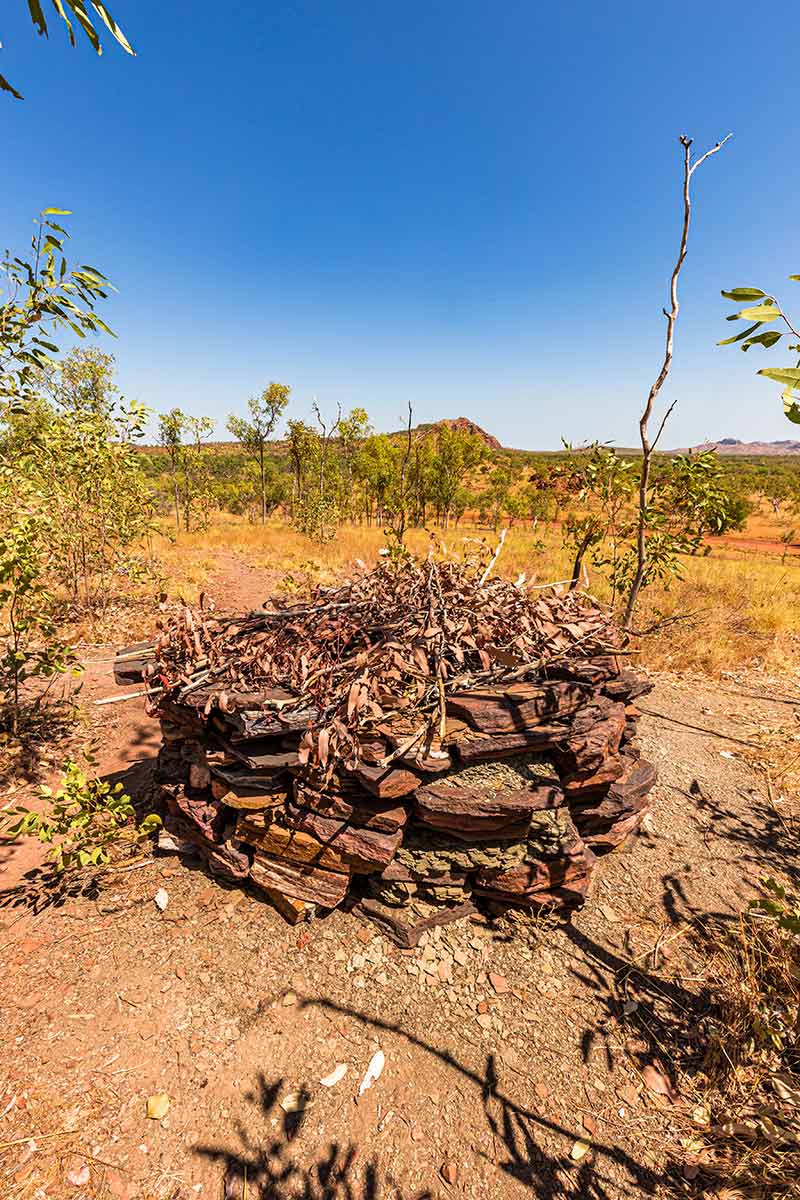
Structures like this were built by Aboriginal people throughout the north-west of Australia and have confused many travellers over the years as to what they could be used for. Do you want me to spoil the surprise?
Well, the structure was used to catch birds of prey. The hunter would light a small fire nearby, then sit in the hide. The smoke would attract the birds of prey and the hunter would poke a lure made from feathers through the sticks. When the bird swooped at the lure, the hunter would retract the lure.
When the bird landed on the top of the hide, the hunter would snatch it through the holes in the sticks – ingenious.
SUMMING UP
Keep River National Park may be a well-kept secret and it may be small, but once you’ve explored its natural and man-made attractions, you will not leave disappointed.
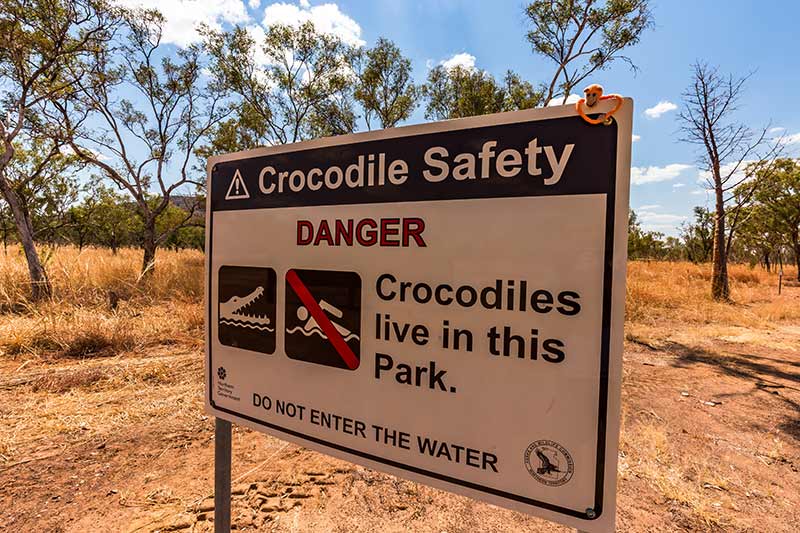
While it’s easy to do a day trip from Kununurra (66km) or Lake Argyle Resort (44km), to ultimately enjoy the jaw-dropping landscapes, the stunning walks and well-setup campgrounds, a minimum of two days would be the best option.


